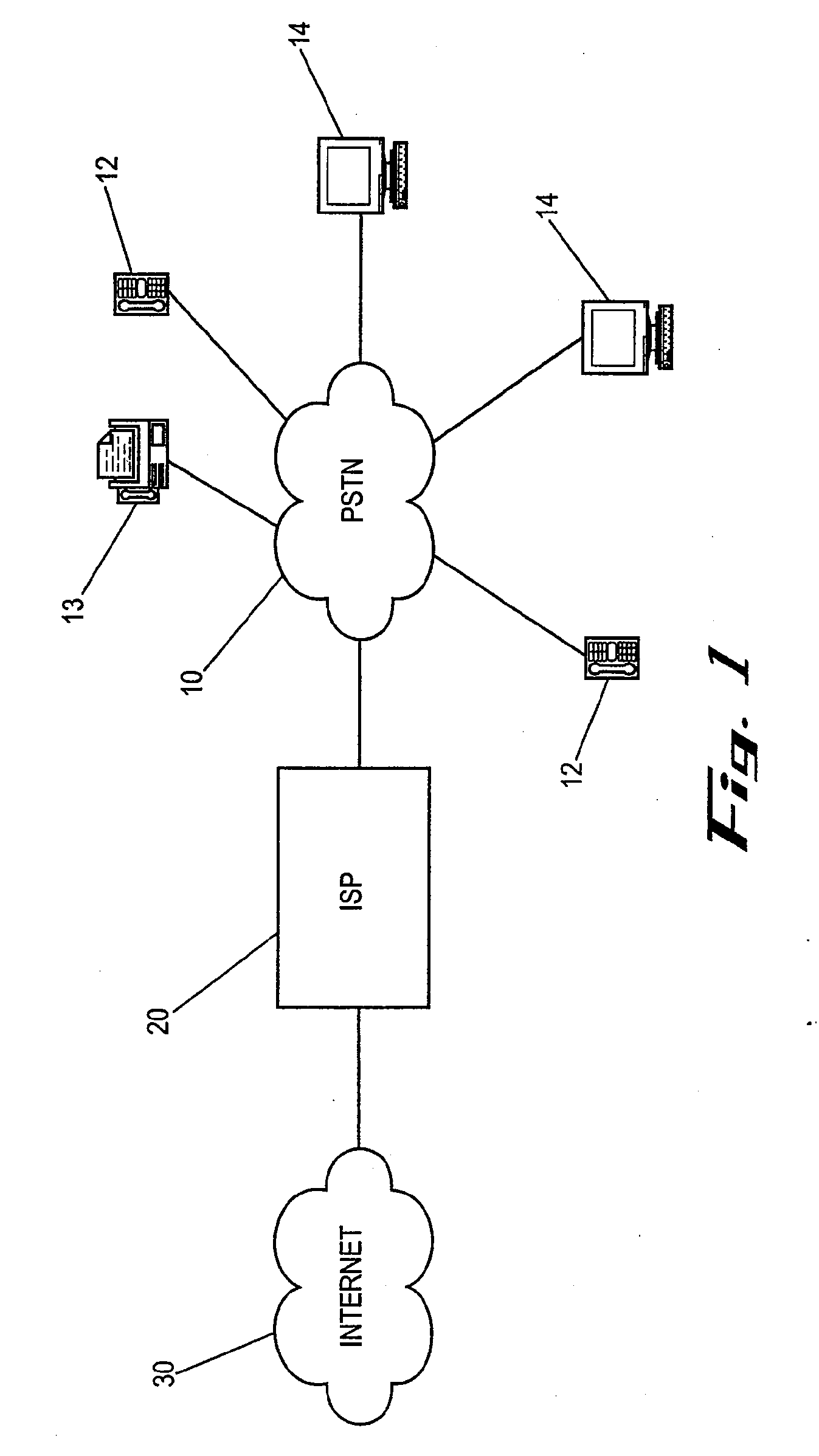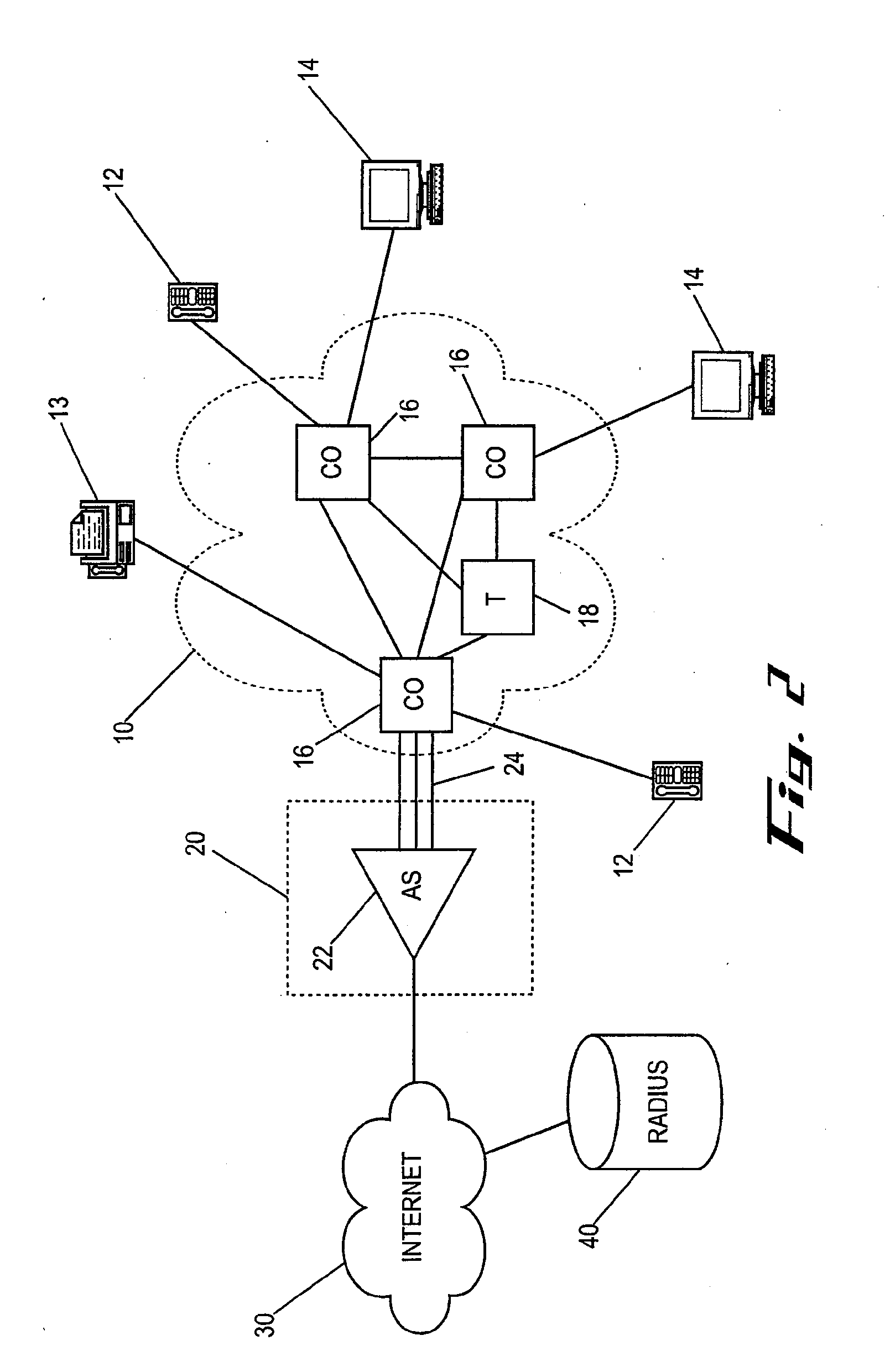Networks, Systems and Methods for Routing Data Traffic Within a Telephone Network Based on Available Resources
a telephone network and network technology, applied in the field of network, systems and methods for routing data traffic within the telephone network, can solve the problems of switching, switching, and inability to quickly update, and the pstn was rather inflexible, so as to achieve efficient routing data calls
- Summary
- Abstract
- Description
- Claims
- Application Information
AI Technical Summary
Benefits of technology
Problems solved by technology
Method used
Image
Examples
Embodiment Construction
[0033] Reference will now be made in detail to preferred embodiments of the invention, non-limiting examples of which are illustrated in the accompanying drawings.
[0034] I. Conventional Network
[0035] With reference to FIG. 1, the Public Switched Telephone Network (PSTN) 10 provides local and long distance telephony service to its subscribers, such as those represented by telephones 12, facsimile machines 13, and computers 14. As discussed above, the PSTN 10 includes Service Switching Points (SSPs), Signaling Transfer Points (STPs), Service Control Points (SCPs), and Service Circuit Nodes (SCNs), which are collectively represented by the PSTN 10. The PSTN 10 also provides a connection to the Internet 30, such as through an Internet Service Provider (ISP) 20. A subscriber using a computer 14 must direct a call through the PSTN 10 in order to gain access to his or her ISP 20, which in turn provides access to the data network called the Internet 30. This arrangement of going through t...
PUM
 Login to View More
Login to View More Abstract
Description
Claims
Application Information
 Login to View More
Login to View More - R&D
- Intellectual Property
- Life Sciences
- Materials
- Tech Scout
- Unparalleled Data Quality
- Higher Quality Content
- 60% Fewer Hallucinations
Browse by: Latest US Patents, China's latest patents, Technical Efficacy Thesaurus, Application Domain, Technology Topic, Popular Technical Reports.
© 2025 PatSnap. All rights reserved.Legal|Privacy policy|Modern Slavery Act Transparency Statement|Sitemap|About US| Contact US: help@patsnap.com



